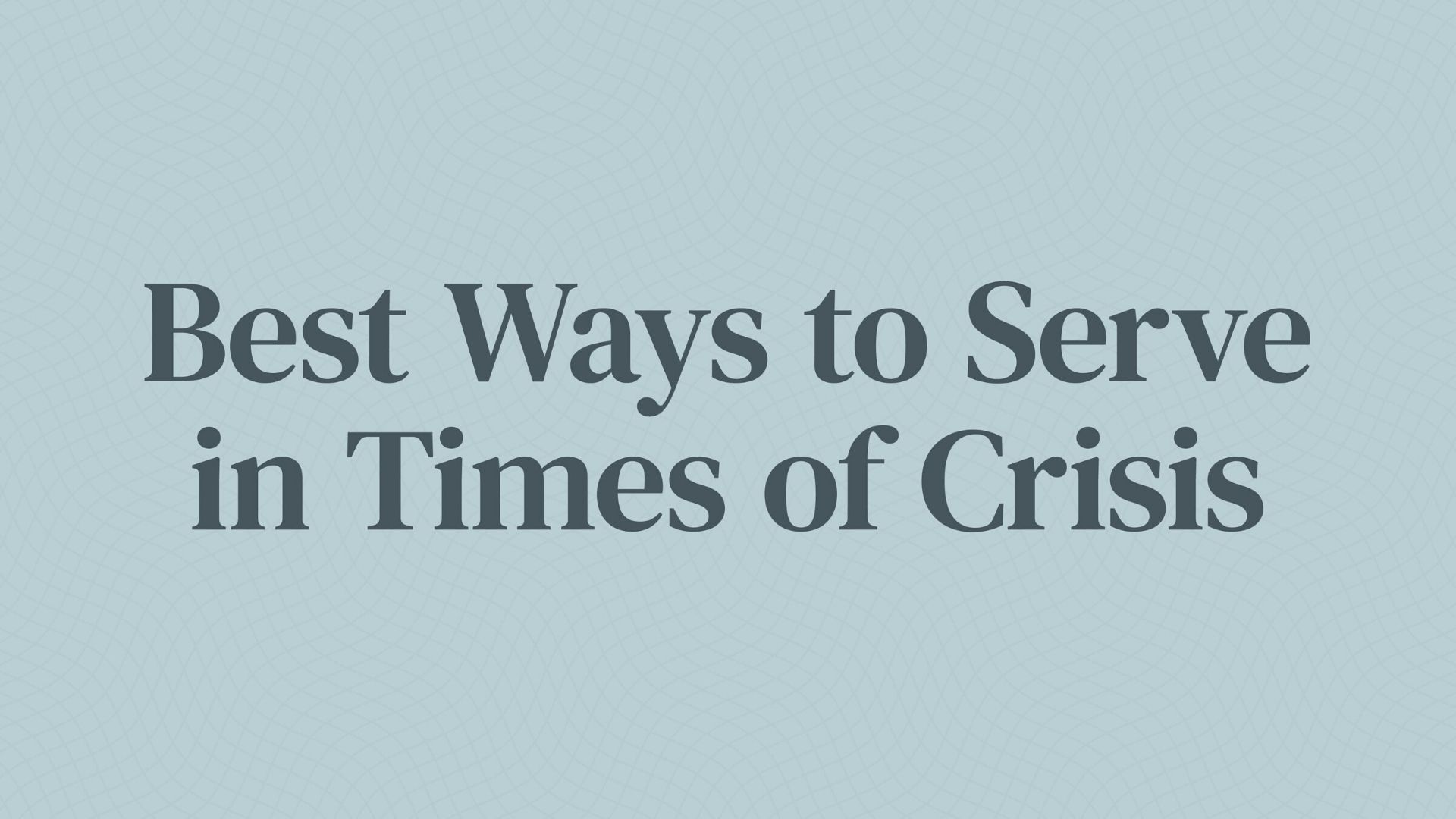Sign up for The Current to receive more great content like this straight to your inbox.
As we face another unique week, hopefully you have found chances to establish routine, to stay healthy (and help others stay healthy), and to settle into a “new normal” for now.
Even in the midst of this crisis, many Watermark members have already set their sights toward helping others. We love that! Time and time again, year after year, we have seen the Watermark body respond remarkably, give generously, and serve sacrificially. Let’s go, church!
(We want to hear the stories of how you and others have served during this time – will you please email servingstories@watermark.org? Your ideas and stories, “small” or “big,” can inspire others!)
Knowing that many of you seek to serve others now – from family members to neighbors to strangers – our External Focus Team wanted to share some basic principles for doing that best. When we help best, our impact goes wider and deeper.
Principle #1: Partner with People
The first goal of serving should be that we partner with the people we’re serving as much as possible. That means not doing for others what they can do for themselves. Instead, those we serve – our kids, extended family, neighbors, or those in our communities – should be given the chance to take part in their own help.
Your neighbor may truly need someone to choose, pay for, and deliver her groceries. But if she has means to pay part of the cost, is able to go with you to the store, or can take part in the process in other ways, then she should. This reflects her dignity (Gen. 1:26-27), strengthens her ability, and builds partnership and relationship between your family and hers.
We can easily slip into two unhealthy mentalities in service – the “hero” mentality or the “efficiency” mentality. As “heroes,” we may pride ourselves in solving problems, from the idea stage to completion. (And we might secretly want some credit, too!) Meanwhile, those stuck in an efficiency mindset focus on tasks instead of people – “If I can do this better than they can, why wouldn’t I?” (These same people probably have a hard time delegating at work or have been tempted to become “helicopter parents.”)
In either scenario, we may be serving or giving very sacrificially. But we’ve missed a big opportunity (and possibly padded our egos) if we’ve done this on our own, without involving the person we seek to help.
As you look for organizations to serve with, keep this principle in mind. Does this church or non-profit participate with those it serves? Or does it simply do things for them or give things to them, without ever inviting them to participate?
Principle #2: Serve in the Context of Relationship
The most effective kind of help is delivered in the context of relationship, when you know someone personally or are connected to them in some way. Relationships allow us to learn the needs people truly have, respond most effectively, continue to “track” with people over time, and connect emotionally and spiritually.
But this doesn’t mean we have to know everyone we help personally, particularly in times like these. When the person you are helping is connected to an organization you trust, you are still serving in the context of a relationship. The same goes for giving financially to these ministries. That church or non-profit will know individual needs best and often continue with people for the long haul.
When we don’t give in the context of relationship, we may feel like we’re helping more than we truly are. For instance, countless GoFundMe pages and Facebook Fundraisers are bound to pop up in the coming weeks. Yet if someone is a stranger (even a stranger with a touching story), we don’t know what the real needs are (if any) or how the money will be used. You also face the spiritual danger of giving only to feel like a hero, rather than entering into the messiness – and opportunity – of relationship.
Principle #3: Decide on Relief or Development
“Is the person I want to help facing a relief need or a development need?"
Relief situations occur when someone truly needs immediate help. This could include a neighbor lacking enough food for today, a friend whose car has broken down, or a family member who will be evicted if they can’t pay rent this week. Relief is “stop the bleeding” service, and it’s vital when it’s truly needed.
However, relief-type service or giving is actually harmful when development is needed.
Development situations involve moving someone to a better situation than they were before. How can we work with a neighbor to ensure they have food for the coming months? What repairs need to be made so our friend’s car doesn’t break down? Should your family member consider moving to a smaller place or finding additional work, so they can pay rent in the months ahead?
In the current pandemic, development might look like teaching people how to stay healthy – or how they can keep their marriage strong while everyone’s home. Development could include joining with other neighbors to look out for the senior adults among us – establishing a ministry that can last weeks, not just hours. We might help a community group member figure out the best education options for his kids while they can’t attend school. Or we can give financially to great organizations who have worked effectively in their communities for years and who will serve them for years to come.
In the middle of the COVID-19 outbreak, we will have some chances to provide immediate relief for acute needs. However, it will also be tempting to view every need as a relief need, when development lasts longer, helps more, and binds us better.
